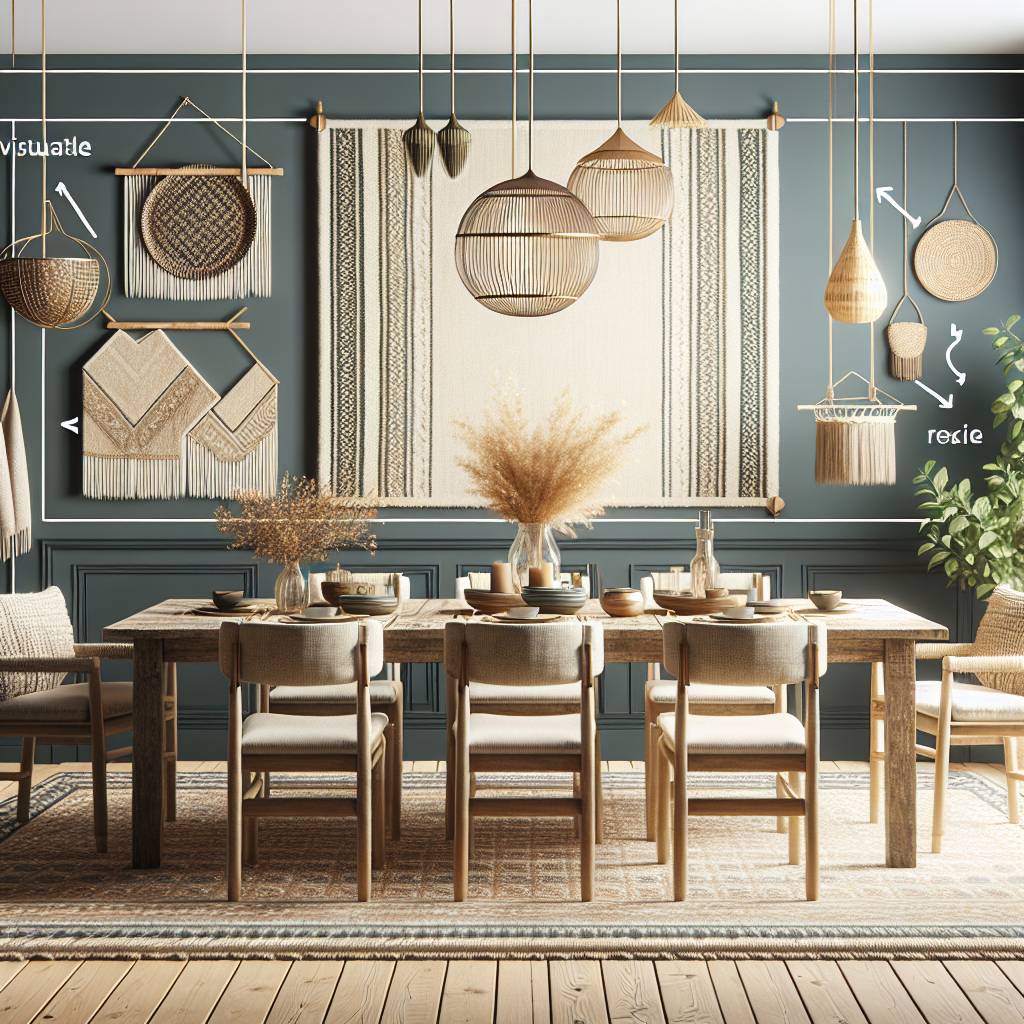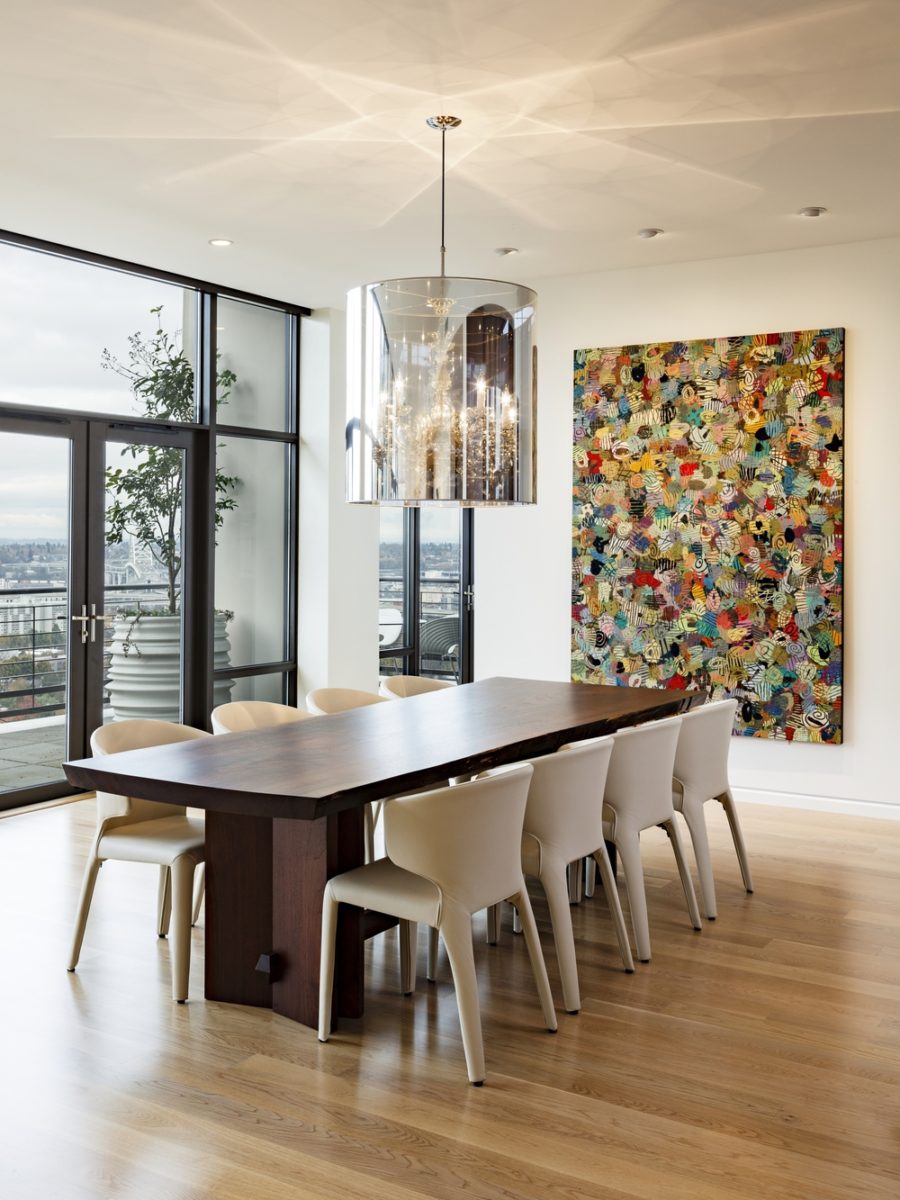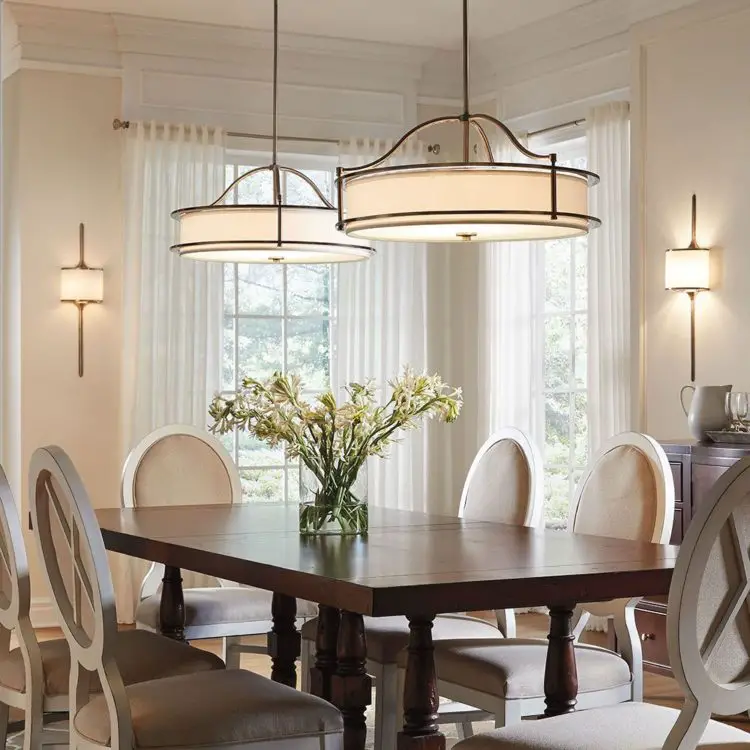Did you know that the average American household spends over $2,000 annually on furniture and decor, including organic dining tables, dining room chairs, and wood dining tables? Choosing sustainable materials not only benefits the environment but also adds a unique touch to your space. From reclaimed wood tables to eco-friendly upholstery fabrics, there’s a myriad of options available that are both chic and environmentally responsible. Whether you’re aiming for a modern aesthetic or embracing rustic charm, integrating sustainable materials into your dining room design is an impactful way to make a difference while expressing your personal style.
Key Takeaways
- Choose sustainable materials like bamboo, reclaimed wood, and recycled metal for dining room decor to reduce environmental impact.
- Opt for eco-friendly dining tables made from FSC-certified wood, reclaimed materials, or bamboo to support sustainable forestry practices.
- Consider sustainable flooring options such as bamboo, cork, or reclaimed wood to minimize environmental impact and promote healthier indoor air quality.
- Utilize energy-efficient LED lighting to create a green dining ambience while reducing energy consumption and operating costs.
- Use eco-friendly linens made from organic cotton or linen, along with reusable and biodegradable cutlery, to promote sustainable dining practices.
- Embrace minimalism and incorporate sustainable art pieces to enhance the eco-friendly aesthetic of the dining space.
Identifying Sustainable Materials for Dining Spaces
Flooring Options
Bamboo and cork are excellent choices for flooring. Bamboo is a fast-growing grass that can be harvested without killing the plant, making it an eco-friendly option. Cork, derived from the bark of cork oak trees, is a sustainable and tree-friendly material that can be harvested without causing harm to the tree. These materials not only offer durability but also contribute to environmental conservation.
Bamboo and cork flooring, friendly materials, bring a natural aesthetic to your dining space while reducing your carbon footprint. By opting for these materials, you’re not only creating a stylish environment but also promoting sustainability in your home.
Furniture Selection
When looking for sustainable furniture options, consider pieces made from reclaimed wood or recycled materials, such as organic dining tables. Reclaimed wood furniture gives new life to old timber, reducing the demand for freshly cut wood and minimizing waste. Furniture crafted from recycled materials such as metal or plastic contributes to resource conservation and reduces landfill accumulation.
By choosing sustainable materials like reclaimed wood or recycled resources for your dining room furniture, including tables, you’re supporting environmentally responsible practices while adding character and charm to your space.
Fabric Choices
In addition to flooring, furniture, and tables considerations, fabric choices play a significant role in creating a sustainable dining area. Opting for natural fabrics like organic cotton or linen for curtains and upholstery helps reduce the environmental impact of textile production. Organic cotton is grown without harmful pesticides or synthetic fertilizers, promoting soil health and biodiversity.
Choosing linen as an upholstery material further enhances sustainability due to its biodegradability and low water consumption during cultivation compared to other fabrics like polyester or nylon. These fabric choices not only provide comfort but also align with eco-conscious living principles.
Eco-Friendly Dining Table Options
Reclaimed Wood
When choosing sustainable dining tables, consider opting for ones made from reclaimed wood. This type of wood reduces the demand for new timber, helping to preserve forests and minimize environmental impact. By using reclaimed wood for organic dining tables, you’re also giving a second life to materials that might otherwise go to waste.
Reclaimed wood dining tables come in various styles, from rustic farmhouse designs to sleek modern pieces. They often feature unique characteristics like natural knots and grain patterns, adding a touch of individuality to your dining room tables.
Recycled Materials
Another eco-friendly option for dining tables is those made from recycled materials such as glass or metal. These materials, including dining tables, contribute to minimizing environmental impact by repurposing existing resources rather than extracting new ones.
Choosing a recycled glass dining table not only adds an elegant and contemporary touch to your space but also supports sustainability efforts. Similarly, metal-based dining tables can offer durability while being environmentally conscious.
Certifications like FSC
When searching for sustainable options, look for dining tables with certifications like FSC (Forest Stewardship Council). This certification ensures that the wood used in the table’s construction comes from responsibly managed forests. By selecting a dining table with this certification, you can be confident that it has been sustainably sourced and contributes positively to forest conservation efforts.
Sustainable Flooring Choices for Dining Areas
Cork Flooring
Cork flooring is a popular choice for dining areas due to its sustainability. It is harvested from the bark of cork oak trees without harming them, making it an environmentally friendly option for dining tables. The process of harvesting cork doesn’t involve cutting down trees, as only the outer bark is removed. This allows the trees to continue growing and producing more cork, promoting sustainable forests.
Cork flooring also offers practical benefits for dining rooms. It’s naturally resistant to mold, mildew, and pests, making it ideal for dining tables where food is consumed. Its softness provides a comfortable surface underfoot and can help reduce noise in high-traffic areas like dining rooms.
Another advantage of cork flooring is its thermal insulation properties. It retains warmth well, which can be beneficial in creating a cozy atmosphere in dining areas during colder months.
Bamboo Flooring
Similar to cork flooring, bamboo flooring is an eco-friendly option suitable for dining room decor. Bamboo grows rapidly and reaches maturity within 5-7 years compared to hardwood trees that take decades to mature. This fast-growing nature makes bamboo highly renewable and sustainable.
In addition to being sourced from sustainable forests, bamboo has inherent durability that makes it ideal for use in high-traffic areas like dining rooms. Its strength rivals that of traditional hardwoods while offering a distinctive appearance with natural variations in color and grain patterns.
When used as flooring, bamboo provides an elegant aesthetic that complements various interior design styles commonly found in dining areas such as modern or contemporary decor themes.
Recycled Rubber Flooring
For those seeking a durable yet sustainable option for their dining area floors, recycled rubber flooring made from old tires presents an excellent solution. By repurposing discarded tires into functional floor coverings instead of letting them accumulate at landfills or incineration sites helps reduce environmental impact while providing long-lasting performance.
Recycled rubber floors offer resilience against heavy foot traffic common in busy family homes where meals are enjoyed together regularly. They are easy on joints due to their cushioned texture which can be especially advantageous during lengthy dinner gatherings when individuals spend extended periods standing around the table enjoying each other’s company.
Energy-Efficient Lighting for Green Dining Ambience
LED Bulbs
LED light bulbs are an essential part of creating a friendly dining room. They are energy-efficient, lasting much longer than traditional incandescent bulbs. This means less waste and fewer replacements, making them a sustainable choice for your dining space. By using LED bulbs, you can significantly reduce the amount of energy consumed while still enjoying well-lit meals with family and friends.
LED light bulbs last longer than traditional incandescent ones. They consume less energy, contributing to a more sustainable dining environment.
Dimmer Switches
Installing dimmer switches is another way to create an eco-friendly ambiance in your dining room. With dimmers, you have the flexibility to adjust lighting levels according to the desired mood or occasion. This not only enhances the atmosphere but also helps save energy by reducing unnecessary brightness when it’s not needed.
Dimmer switches allow you to adjust lighting levels based on your preferences. They help save energy by avoiding excessive brightness in the restaurant interiors.
Natural Light Integration
Incorporating natural light into your dining space is crucial for creating an environmentally friendly setting. Large windows or skylights can be integrated into the design of your dining room, allowing ample natural light to illuminate the area during daytime hours. By utilizing natural light, you minimize reliance on artificial lighting sources and decrease overall energy consumption within the space.
Natural light integration reduces dependence on artificial lighting. Large windows or skylights bring in abundant natural light for a more sustainable room environment.
Eco-Friendly Linens and Cutlery for Dining Tables
Organic Table Linens
When choosing sustainable materials for dining room decor, opt for table linens made from organic cotton or hemp. These materials are grown without harmful pesticides, making them environmentally friendly. By selecting organic table runners and placemats, you can contribute to reducing the use of chemicals in agriculture. These eco-friendly linens provide a natural and earthy aesthetic to your dining space.
Organic cotton and hemp table linens offer a soft texture and come in various colors and patterns, allowing you to match them with different dining room themes. Moreover, using reusable cloth napkins instead of disposable paper napkins is an excellent way to minimize waste while adding an elegant touch to your dining tablescape. By incorporating these sustainable choices into your dining room decor, you can create an inviting atmosphere while supporting environmentally conscious practices.
Sustainable Cutlery Options
Another essential aspect of sustainable materials for dining room decor is the choice of cutlery. When selecting cutlery items for your kitchen and dining area, consider opting for those made from sustainable materials such as bamboo or recycled metals like stainless steel. Bamboo cutlery offers a natural appeal due to its grain patterns and durability. It is also biodegradable, making it an eco-friendly alternative to plastic utensils.
On the other hand, stainless steel cutlery provides longevity and can be easily recycled at the end of its lifecycle. Choosing these sustainable options not only reduces reliance on non-renewable resources but also minimizes the environmental impact associated with traditional plastic or metal cutlery products.
Incorporating eco-friendly linens made from organic cotton or hemp along with reusable cloth napkins adds a touch of elegance while contributing towards sustainability efforts in your home environment. By opting for bamboo or stainless steel cutlery over conventional plastic ones, you enhance the overall visual appeal of your dining space while promoting responsible consumption habits.
Incorporating Sustainable Art and Minimalism
Eco-Friendly Artwork
When decorating your dining room, consider using sustainable materials for dining room decor such as artwork made from recycled paper or framed with reclaimed wood. These eco-friendly options not only add a unique touch to your space but also contribute to reducing environmental impact. For instance, you can find beautiful paintings on canvas made from organic cotton or hemp fibers, promoting sustainability in interior design.
Art pieces created using sustainable materials are not only visually appealing but also carry a meaningful message of environmental consciousness. By choosing these artworks, you support artists who prioritize eco-friendly practices and inspire others to embrace sustainable living through art. This way, you can elevate the aesthetics of your dining area while aligning with environmentally responsible choices.
Embracing Minimalism
Incorporating minimalism into your dining room decor involves decluttering the space and focusing on essential items. By doing so, you reduce waste and promote a sustainable lifestyle within your home environment. Consider keeping only the necessary furniture and decorations in your dining area, emphasizing quality over quantity.
Minimalist design encourages intentional consumption by prioritizing functionality without compromising style. Opt for durable material like solid wood or metal for furniture pieces rather than constantly replacing cheaply manufactured items that may end up in landfills after a short lifespan. Embracing minimalism allows natural light to flow freely through the space, reducing the need for excessive artificial lighting and further contributing to energy conservation.
Natural Elements as Decor Accents
Another way to incorporate sustainable elements into your dining room decor is by integrating natural accents such as plants or dried flowers. These additions not only enhance the visual appeal of the space but also improve indoor air quality while connecting with nature indoors. Choose decorative planters made from recyclable materials like glass or repurposed containers to complement this eco-friendly approach.
Steps to Creating a Comprehensive Sustainable Dining Room
Assess Current Materials and Furniture
When creating a sustainable dining room, start by evaluating the existing materials and furniture. Look for areas where improvements can be made to reduce environmental impact. For example, consider whether the current dining table, chairs, or cabinets are made from sustainable materials such as reclaimed wood or bamboo. Identify any items that can be repurposed or recycled instead of being discarded as waste.
Research Sustainable Brands and Products To create a comprehensive sustainable dining room, it’s essential to research brands and products that align with your values. Look for companies that prioritize eco-friendly practices, use renewable resources, and minimize their carbon footprint. Choose furniture and decor items made from sustainable materials such as FSC-certified wood, natural fibers like jute or hemp, or recycled metal. By making conscious purchasing decisions, you contribute to the demand for environmentally friendly products.
Incorporate Energy-Saving Practices
In addition to selecting sustainable materials for your dining room decor, consider incorporating energy-saving practices into the space. This could involve using smart thermostats to regulate heating and cooling more efficiently. Another option is installing solar panels on the roof of your home to harness renewable energy sources and reduce reliance on non-renewable electricity.
Selecting and Maintaining Eco-Friendly Dining Furniture
Recycled or Upcycled Materials
When choosing sustainable furniture for your dining room, opt for pieces made from recycled or upcycled materials. These materials help minimize waste by giving new life to old items. For instance, you can look for dining room chairs crafted from reclaimed wood or metal salvaged from discarded objects.
Selecting furniture made from recycled or upcycled materials not only reduces the demand for new resources but also adds a unique and rustic charm to your dining space. By choosing these kinds of sustainable options, you contribute to environmental conservation while enjoying stylish and functional furniture.
Non-Toxic Finishes and Stains
In addition to selecting furniture made from eco-friendly materials, it’s important to choose pieces with non-toxic finishes or stains. These finishes eliminate harmful chemicals that could otherwise be released into your home environment over time. When shopping for sustainable dining room chairs, tables, or other furniture items, look for those labeled as meeting ecological standards and free of volatile organic compounds (VOCs).
By opting for non-toxic finishes and stains on your dining room furniture, you create a healthier indoor environment while supporting environmentally conscious practices in the production of household goods. This choice promotes the well-being of both your family members and the planet.
Regular Cleaning with Natural Products
To maintain your eco-friendly furniture, it’s essential to clean them regularly using natural cleaning products. Avoid harsh chemical cleaners that can compromise the integrity of sustainable materials over time. Instead, use gentle solutions such as vinegar-based cleaners or mild soaps mixed with water.
Regular maintenance not only keeps your eco-friendly dining room decor looking its best but also helps prolong its lifespan. By utilizing natural cleaning products when caring for your sustainable furniture, you ensure that they continue to contribute positively to a healthy home environment without causing harm during their upkeep.
Benefits of Embracing Eco-Friendly Dining Room Decor
Reduce Carbon Footprint
Choosing sustainable materials for dining room decor can significantly reduce your carbon footprint. By opting for furniture and decor made from renewable or recycled materials, you are minimizing the environmental impact associated with traditional manufacturing processes. For instance, selecting a dining table crafted from reclaimed wood not only adds a rustic charm to your space but also helps in preserving forests by reducing the demand for new timber.
Items like chairs made from bamboo or rattan contribute to lower carbon emissions as these plants grow rapidly and require minimal resources compared to traditional hardwoods. By incorporating such eco-friendly options into your dining room decor, you actively participate in mitigating climate change and promoting sustainable practices within your home.
Healthier Indoor Environment
Embracing sustainable materials in your dining room decor also contributes to creating a healthier indoor environment. Many conventional furniture and building materials contain harmful toxins that can off-gas over time, leading to poor indoor air quality. Opting for eco-friendly alternatives such as low-VOC (volatile organic compound) paints, formaldehyde-free wood products, and natural fiber upholstery helps in reducing exposure to these hazardous substances.
For example, choosing dining chairs upholstered with organic cotton or linen fabric eliminates the risk of introducing synthetic chemicals into your living space. Similarly, investing in a sustainably sourced wooden dining cabinet coated with water-based finishes ensures that no harmful fumes are released into the air inside your home. Ultimately, prioritizing environmental impact when decorating your dining area enhances the overall well-being of everyone who gathers there.
Preservation of Natural Resources
When you opt for sustainable materials in furnishing and adorning your dining room, you actively contribute to the preservation of natural resources. The use of recycled metals or glass accents not only adds unique character to the space but also reduces the need for extracting raw ores or producing new glass from virgin materials.
Furthermore, choosing furnishings constructed from fast-growing plants like hemp or jute lessens reliance on slow-renewing resources such as traditional cotton or synthetic fibers derived from petroleum-based sources. By consciously embracing environmentally friendly choices while designing your dining area’s ambiance through wall art made from reclaimed metal sculptures or repurposed textiles supports conservation efforts by decreasing reliance on finite resources.
Closing Thoughts
Congratulations on taking the first step towards creating a sustainable and eco-friendly dining room! By incorporating sustainable materials, energy-efficient lighting, and eco-friendly furniture, you’re not only enhancing the aesthetic appeal of your dining space but also contributing to a healthier environment. Embracing eco-friendly dining room decor is not just a trend; it’s a conscious choice that reflects your commitment to sustainability.
As you embark on this journey, remember that every small change makes a significant impact. Whether it’s choosing reclaimed wood for your dining table or opting for energy-saving LED bulbs, each decision contributes to a greener lifestyle. So, go ahead and infuse your dining room with sustainable elements, knowing that you’re making a positive difference for the planet and future generations.
Frequently Asked Questions
What are some sustainable materials suitable for dining room decor?
You can consider materials like reclaimed wood, bamboo, cork, and recycled glass for furniture and decor. These options not only add a touch of eco-friendliness to your dining space but also contribute to the sustainability of the environment.
How can I create an energy-efficient and green dining ambience through lighting?
Opt for LED bulbs or fixtures with dimmer switches to reduce energy consumption. By incorporating natural light whenever possible and choosing fixtures made from sustainable materials, you can create a warm and inviting yet environmentally friendly dining atmosphere.
What are some eco-friendly linens and cutlery options for my dining table?
Look for organic cotton or linen tablecloths, napkins, and placemats as they are biodegradable. For cutlery, consider bamboo or stainless steel utensils that are durable and reusable. These choices align with sustainable practices while adding elegance to your dining setup.
How do I select eco-friendly dining furniture while ensuring it’s easy to maintain?
Opt for furniture made from responsibly sourced wood or recycled materials that require minimal maintenance. Look for finishes that are non-toxic and easy to clean without harsh chemicals. This way, you’ll have stylish yet low-maintenance pieces contributing positively to the environment.





